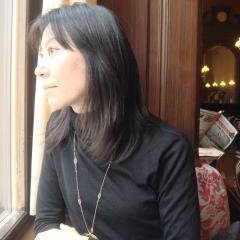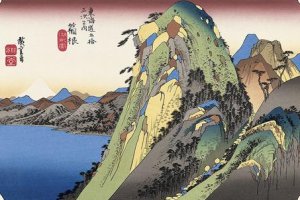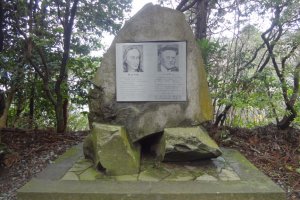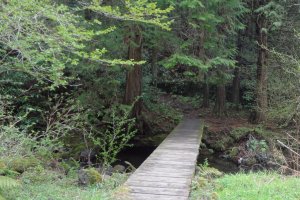Can you believe that you can take a walk down the exact same road and see the exact same view that people did 400 year ago?
In the old days, the Hakone Pass was called the most dangerous mountain to cross in Japan. Because of the steep slopes, travelers could move at a pace that was only 80% as fast as that of a normal journey. Now we are able to cross over the pass in less than one hour by car. But we can still enjoy some parts of the Old Hakone Highway in the same way that people like Engelbert Kaempfer, going to and from Edo, (through Yokohama) used to walk it on foot.
The route
The Old Hakone Highway is a part of the Old Tokaido (the original road connecting Kyoto and Edo). It is now maintained as a hiking course between Moto-Hakone and Hakone Yumoto. The Hakone Pass is 835 meters above sea level, Moto-Hakone (near the Ashino-ko Lake) is about 800 meters above, and Hakone Yumoto is about 80 meters above. The descending course is easier, but be careful about your knees. The ascending course takes about 6 hours. If you are not confident about walking the entire course, you can take a bus on the way—there are plenty of bus stops accessible along the way, and the bus comes every 20 minutes or so. The course sometimes travels along with the road, but most of it is along a comfortable small path or on an exciting rough stone path that must be the same as it was 400+ years ago.Isolated from the quick rhythms of modern life, that portion of the road is calm, peaceful and surrounded by fresh green forest and towering cedars. I recommend starting at Moto-Hakone, and walking (up for a short while, and then) down the hill to Hatajuku. This takes about 2.5 hours, including a few short breaks.
Highlights
Kaempfer’s Monument
Near Moto-Hakone, there is a monument, which commemorates two western men: Kaempfer and Birnie. In early Edo, only Holland had official diplomatic relations with Japan. Engelbert Kaempfer was a medical officer of the Dutch East-India Company who accompanied the Dutch mission to Yokohama and Edo twice. Later he introduced Japanese history, politics, religion, trade, and his travels to Edo in his book. Many scholars and politicians referred to his accurate descriptions for quite a long time. The History of Japan was published after he died and became a bestseller in 18th century Europe. Montesquieu, Voltaire and Kant used Kaempfer’s reports as a source of information about Japan. It was also the book that Commodore Perry repeatedly read before he came to Japan. A fan of the book 200+ years later, Birnie (an Englishman born in Australia) was strongly impressed with its descriptions of the beauty of nature in Hakone, and did his best to influence the local people to protect that beauty.
Otama-ga-ike Pond
After you walk along the rough stone path for 20 minutes or so (it’s a bit tough), you’ll see a sign for Otama-ga-ike. Although you have to detour away from the course, it is worth visiting. This beautiful pond has a sad story related to the Hakone Check Point. You can go down to the path and stand beside the pond.
Amazake-ja-ya (teahouse)
If you choose the ascending course from Hatajuku or Hakone Yumoto, you’ll definitely need a break here at Amazake-ja-ya. This is an old house with a thatched roof. You can have some tea, amazake (hot, sweet rice wine), and a few different kinds of rice cakes here. The inside of the house is quite dark and smoky from a sunken hearth. It has a high ceiling, and wide-open space. Next to the teahouse is a small museum, displaying items and scenes from Hakone’s old days.
Hatajuku
When you see a big pair of heaped-up soil mounds flanking the path, you have reached Hatajuku, a place famous for yosegi (wooden mosaic work). At Yosegi-kaikan (寄木会館) the process for manufacturing wood mosaics is demonstrated. There are some shops along the street, and you can see and buy their beautiful wood products.
Engelbert Kaempfer
Kaempfer was born in Lemgo, Germany in 1651. He left Lemgo when he was 16, and travel and studied through Germany, Poland, Holland, Russia, and Sweden. He mastered medical science, history, and natural history, and then came to Japan as a medical officer. He arrived at Nagasaki in September 1690 and lived there until October 1692. Besides his medical duties, he sought out information and items of various fields in Japan: plants, shellfish, insects, animals, history, political systems, manners and customs, religion, art and handcraft, natural resources and so on. He collected enormous numbers of specimens to support his reports. Kaempfer’s collection was eventually stored up in the British Museum.
The Old Hakone Highway gives us a rare glimpse of the way people in the Edo era traveled. Please try and enjoy the walk, looking back upon Kaempfer’s age.
































-97003.jpg)


![วัดโทไดจิ [Todaiji Temple] วัดโทไดจิ [Todaiji Temple]](https://a1.cdn.japantravel.com/photo/9399-224954/90x60!/nara-วัดโทไดจิ-todaiji-temple-224954.jpg)